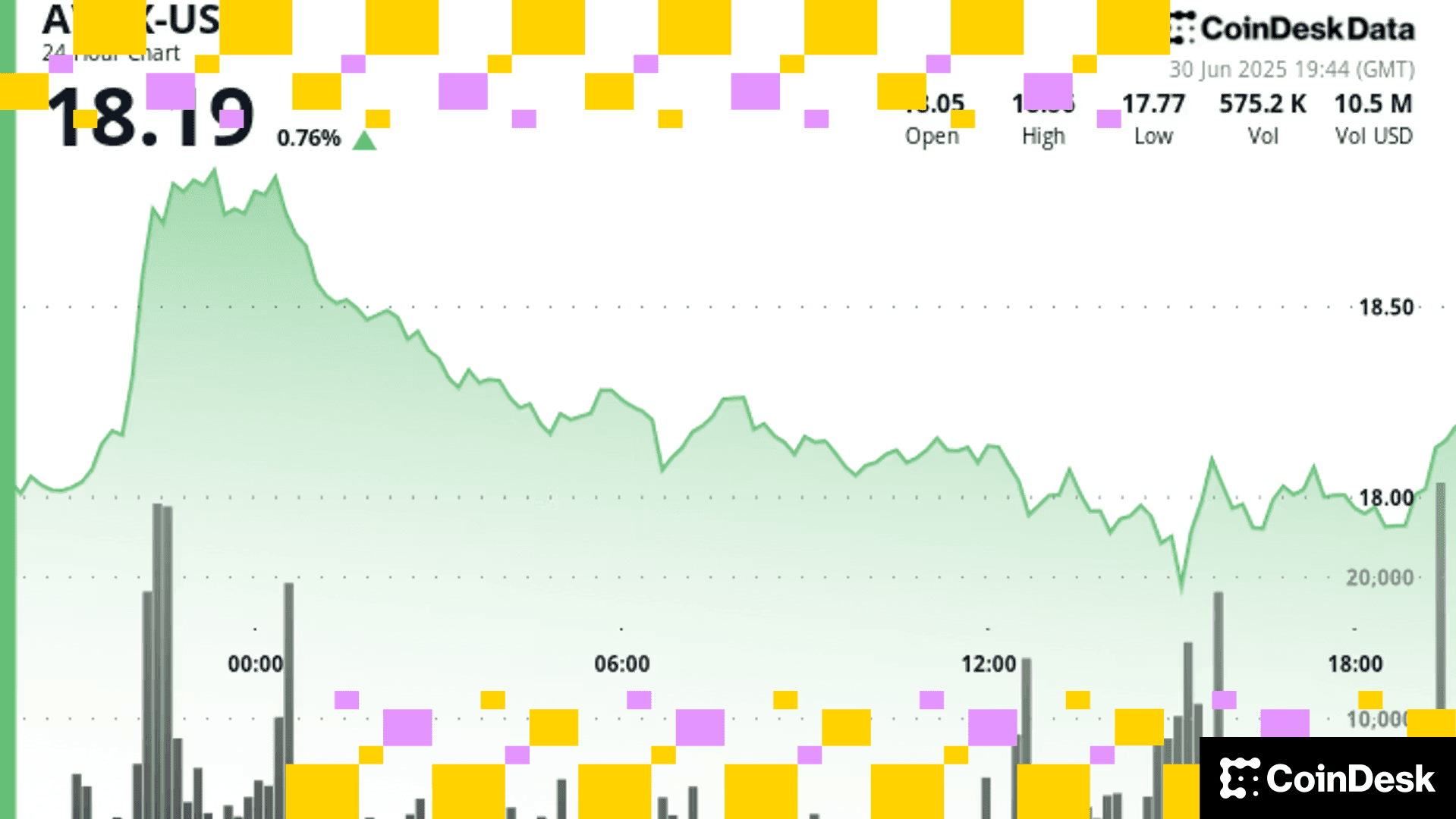The Biggest Story in Crypto: The Stablecoin Surge and Power Politics
Nic Carter appears on our new Opinionated podcast to discuss the $20 billion stablecoin phenomenon and its implications for the global financial system.

Welcome to Opinionated, a new podcast featuring CoinDesk's leading columnists and contributors.
For free, early access to Opinionated, subscribe to CoinDesk Reports with Apple Podcasts, Spotify, Stitcher, CastBox or direct RSS for your favorite podcast player.
I'm your host, Ben Schiller, CoinDesk's opinion editor.
On this week's show, we're joined by Nic Carter, cofounder of Coin Metrics and partner at Castle Island Ventures.
Nic discusses this year's $20 billion surge in USD-backed stablecoins (what he calls "crypto-dollars") and the potentially enormous implications of an offshore dollarization system based on blockchain.
Fiat-backed stablecoins are "not what Satoshi intended," Carter says, but their "preposterous" growth this year is the "the most important phenomenon in the industry."
"It not only tells us about the maturation of the crypto financial infrastructure. It also tells us a lot about current geopolitics, too," he says.
Nic has written two op-eds for CoinDesk about crypto-dollars:
"Policymakers Shouldn't Fear Digital Money: So Far It's Maintaining the Dollar's Status" (from February)and"The Crypto-Dollar Surge and the American Opportunity" (this month).
U.S. policymakers fear losing power as dollar-flows increasingly shift to stablecoins.
Central bankers may have less ability to set interest rates. And the corresponding banking infrastructure, based largely in New York, will process fewer transactions as people move into assets like tether and USDC instead.
Nonetheless, Carter says the U.S. should embrace this new form of money technology.
One, it's mostly, for now, a U.S. industry, and overwhelmingly pegged to dollars. More dollars in circulation, while not necessarily good for American workers, is good for the dollar's reserve currency status.
Two, blockchains are inherently neutral – "equal opportunity databases" that don't exclude people and represent financial freedom. That ought to accord with American values.
And third, if the U.S. doesn't sanction stablecoin transactions, some other country or company will, inviting in the threat of surveillance and a loss of power anyway.
"The U.S. should consider embracing a neutral alternative to the highly politicized New York corresponding banking system before it's too late and whole tranches of its allies defect to a Chinese or a Russian system," Carter says.
Nic had a lot more to say about stablecoins, the future of money and great power rivalry. Check it out here, and please subscribe to CoinDesk's new podcast feed.
For free, early access to Opinionated, subscribe to CoinDesk Reports with Apple Podcasts, Spotify, Stitcher, CastBox or direct RSS for your favorite podcast player.
Note: The views expressed in this column are those of the author and do not necessarily reflect those of CoinDesk, Inc. or its owners and affiliates.
Di più per voi
Exchange Review - March 2025

CoinDesk Data's monthly Exchange Review captures the key developments within the cryptocurrency exchange market. The report includes analyses that relate to exchange volumes, crypto derivatives trading, market segmentation by fees, fiat trading, and more.
Cosa sapere:
Trading activity softened in March as market uncertainty grew amid escalating tariff tensions between the U.S. and global trading partners. Centralized exchanges recorded their lowest combined trading volume since October, declining 6.24% to $6.79tn. This marked the third consecutive monthly decline across both market segments, with spot trading volume falling 14.1% to $1.98tn and derivatives trading slipping 2.56% to $4.81tn.
- Trading Volumes Decline for Third Consecutive Month: Combined spot and derivatives trading volume on centralized exchanges fell by 6.24% to $6.79tn in March 2025, reaching the lowest level since October. Both spot and derivatives markets recorded their third consecutive monthly decline, falling 14.1% and 2.56% to $1.98tn and $4.81tn respectively.
- Institutional Crypto Trading Volume on CME Falls 23.5%: In March, total derivatives trading volume on the CME exchange fell by 23.5% to $175bn, the lowest monthly volume since October 2024. CME's market share among derivatives exchanges dropped from 4.63% to 3.64%, suggesting declining institutional interest amid current macroeconomic conditions.
- Bybit Spot Market Share Slides in March: Spot trading volume on Bybit fell by 52.1% to $81.1bn in March, coinciding with decreased trading activity following the hack of the exchange's cold wallets in February. Bybit's spot market share dropped from 7.35% to 4.10%, its lowest since July 2023.
More For You












